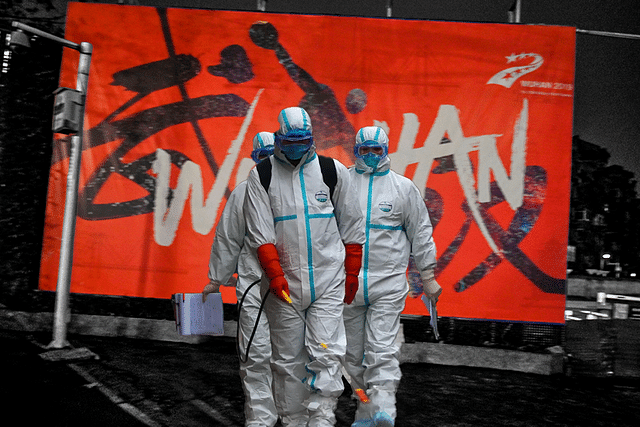
Everything You Should Know About The Coronavirus Outbreak That Began In China And Is Now Spreading
The coronavirus is making news world over for its lethal nature and lack of cure. What should we in such a situation? Here are some guidelines.
A virus outbreak from Wuhan, China, is currently putting the whole world into panic, with especially international travellers and governments trying their best to prevent the entry of the virus into their countries.
With a myriad updates coming in from all news portals, a commoner would likely get confused as to what is going on.
Here’s a summary for an Indian who wants to know about the new potential “stealth killer” virus.
1. What are Coronaviruses?
Coronaviruses are a group of viruses that mostly cause diseases in animals like diarrhoea and upper respiratory infections.
In humans, they usually cause mild respiratory diseases, often like common cold. In rare cases, like the current one, they become potentially lethal.
There have been three outbreaks of lethal coronaviruses —
A) SARS-CoV, causing the Severe Acute Respiratory Syndrome in 2003
B) MERS-CoV, causing the Middle East Respiratory Syndrome in 2012
C) n-CoV, the “new/novel coronavirus” causing the current Wuhan Coronavirus outbreak.
2. How do these viruses spread?
The mode of spread of coronaviruses have still been somewhat of a mystery. Earlier episodes have indicated a person-to-person spread through respiratory secretions, such as seen in MERS and SARS. But there were many evidences of an animal-to-human spread, such as camels in MERS and cats in SARS.
3. How did the Wuhan Coronavirus spread?
The current Wuhan Coronavirus has been speculated to come from live animals sold in the Huanan fish and seafood market in Wuhan, which technically should sell only seafood.
Later on, when further cases appeared, it was found that the virus had person-to-person spread too. This spread has been speculated to come from aerosols formed due to sneezing, which when inspired/comes in contact with surface like eye, enters the body.
4. Which countries did it further spread to?
Outside China, cases have been confirmed in Thailand, Vietnam, Taiwan, South Korea, Singapore, Nepal, Japan, The USA, Australia and France. Those have come from international travellers moving out of China, either as foreign tourists or as panicked expats wanting to return back.
5. How does the disease progress, and what are its symptoms and signs?
After the virus enters the body, symptoms appear within 14 days. This time period is called the incubation period. The disease starts with fever, cough and fatigue, progressing to pneumonia, acute respiratory distress syndrome (ARDS) and eventually death, if intensive care is not given. As of now, there is no cure.
The disease has characteristics of interstitial pneumonia. As reported by caixin.com, CT scans of the patients are showing “ground-glass appearance of lungs” as said by doctors in Wuhan.
6. What is the Government of India currently doing on this?
According to a press release of the Ministry of Health and Family Welfare, Government of India, as on 22 January, 2020, as many as 12,828 passengers from 60 flights have been screened for n-CoV symptoms, and no passenger has been detected in India so far.
Moreover, they have also set up a 24-hour helpline (+91-11-23978046) to attend to public queries, and have alerted all state and district health authorities to notify all cases who show signs and symptoms of interstitial pneumonia, and whoever has a travel history to China.
It needs to be mentioned that as of now (27-01-2020, 9:15 pm), India’s Ministry of External Affairs has confirmed that no Indian currently in China are affected by the Wuhan Coronavirus outbreak, and they are trying to evacuate them out of China.
Airport authorities of all international airports of India have now installed thermal sensors to screen passengers coming from international flights.
7. What you, as an Indian, should do?
For now, there is no need to panic for resident Indians, as all susceptible persons have been quarantined in the airports. However, it is imperative to keep updated of the latest news regarding the Wuhan Coronavirus Outbreak.
Moreover, WHO has issued standard recommendations for the general public (which should be followed by international travellers moving to and from India) to reduce exposure to and transmission of a range of illnesses, which include hand and respiratory hygiene, and safe food practices:
· Frequently clean hands by using alcohol-based hand rub or soap and water;
· When coughing and sneezing cover mouth and nose with flexed elbow or tissue – throw tissue away immediately and wash hands;
· Avoid close contact with anyone who has fever and cough;
· If you have fever, cough and difficulty breathing seek medical care early and share previous travel history with your healthcare provider;
· When visiting live markets in areas currently experiencing cases of novel coronavirus, avoid direct unprotected contact with live animals and surfaces in contact with animals;
· The consumption of raw or undercooked animal products should be avoided. Raw meat, milk or animal organs should be handled with care, to avoid cross-contamination with uncooked foods, as per good food safety practices.
The virus has reached epidemic proportions, and it won’t be too long for it to be declared a pandemic. Epidemiologists and public health experts are racing against time to find a cure and stop its progression.